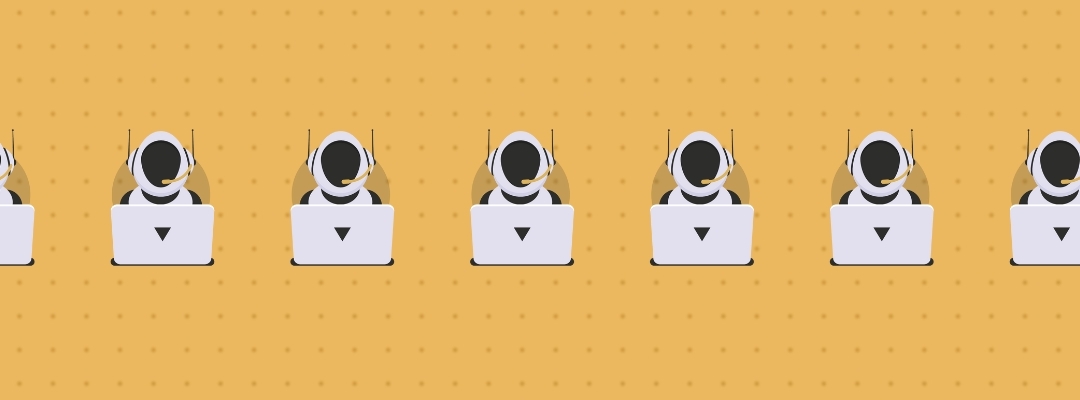Contents
Introduction
Sometimes a quote is all it takes to start a new blog.
Of course about AI!
Ah, the quote?
Here it is:
“We need to think as big as we can…before AI thinks bigger than we do.”
– Marco Argenti
The man got a point. AI is evolving fast—almost too fast. And it’s pushing us to think bigger, move quicker, and find new ways to use this technology in ways we never thought possible. It’s clear we’re in a race to keep up. But the big question is: are we ready to think big enough?
And yes, still not tired of talking about AI agents! Honestly, the more we explore this topic, the more fascinating it gets. Every time I think we’ve covered it all, something new pops up—a fresh perspective, a surprising use case, a new tool, or another layer of complexity…. It feels like there’s always another layer and so many opportunities waiting to be explored. There’s just too much happening to stop now… so let’s see where this leads us! If you’ve already checked out the previous ones, How AI Became an Agent and Understanding how AI Agents Work, you’re well prepared to read this one. 🙂
The first adjective that comes to my mind when I have to describe AI is FASTER. It is definitely faster in finishing tasks than any human I know, but is AI more rational? More intelligent? More organized? More insightful? More reliable? More creative? More… human than us?
Well.. depends on which one.
Aha.
That means not all AI agents are alike!
So the question now is, how many types of AI agents are there? As it seems some are simple, some complex, some proactive, some creative, some utility-oriented, some learning-oriented, some fixed…. etc.
In this blog, we will explore the different types of AI agents and their possible applications in various sectors.
Starting with…
3 key components that make up AI Agents
AI agents in modern systems consist of essential elements like sensors, effectors, and decision-making frameworks, all of which enable intelligent operation. These components work together to help AI agents collect, interpret, and react to real-time data, making them invaluable in handling large customer service call volumes.
- Sensors capture real-time data from each customer interaction.
- Effectors execute the chosen actions based on what the customer needs.
- Decision-making frameworks process data to guide the agent toward the most suitable response.
Now that we know the components, we can get more detailed about the types.
Different types of AI Agents & what sets them apart
AI agents come in all sorts of varieties, each with its own way of solving problems. Some are very simple, while others are designed to handle more complex tasks. Understanding the different types of agents can help us know which one fits best for any situation. So the type of AI agent you choose depends on how much thinking or decision-making is involved. Let’s break it down:
1. Simple reflex agents or the quick responders
Simple reflex agents are like a light switch—they react immediately to something happening, without much thought. For example, if you type in a specific word in a chat, a bot might reply with a predefined message based on that word. It’s automatic, quick, and doesn’t think about anything other than what it’s programmed to do. This is great for automating basic tasks like customer support replies, where only certain triggers need an action.
2. Model-based reflex agents or the ones that are a little more thoughtful
These agents don’t just react to the present moment—they keep track of what happened in the past. By remembering what they’ve learned before, they can make smarter decisions. Imagine a smart thermostat that adjusts the temperature based on the time of day and how warm or cold it was earlier. This is how model-based reflex agents work: they use past experiences to make better decisions in the present.
3. Goal-based agent known as task-oriented problem solvers
Goal-based agents are all about achieving something specific. Instead of just reacting, they plan out different ways to reach a goal. For instance, a fitness app that helps you reach your health goals by suggesting workouts based on your progress is a great example. These agents don’t just follow a set script—they think about the best way to help you get where you want to go, considering multiple paths to the same destination.
4. Utility-based agents or the ones that are making the best choice
Utility-based agents are all about making decisions based on what’s best for you. They weigh the pros and cons of different options and choose the one that gives the best result. For example, a travel app that helps you find the best route for your trip—not just the quickest, but the one that also fits your budget and time preferences—works this way. These agents use a kind of “scorecard” to decide which option will make you happiest.
5. Learning agents that get smarter over time
Learning agents are the ones that improve with experience. They learn from what happens around them, adjust their actions, and get better over time. A great example is a recommendation system on an e-commerce site that gets better at suggesting products based on what you’ve liked or bought in the past. They continuously learn from user behavior to offer smarter suggestions the next time.
6. Hierarchical agents or the organizers of the AI world
Hierarchical agents are like managers who organize and delegate tasks. They break big jobs into smaller, more manageable pieces and assign them to other agents. This helps keep things running smoothly, especially when tasks are complex. For example, a large-scale customer service system might use hierarchical agents to route questions to the right department or answer based on what’s needed. This layered approach makes it easier to manage large systems.
7. Collaborative agents known as team players
Collaborative agents are designed to work with people or other AI systems. They share information, learn from interactions, and help make decisions together. These agents are increasingly used in business environments, where they assist with things like project management or decision-making. You can think of them as the team member who is always there to help, offering insights and suggestions to make things easier and more efficient. The one that we all love! 🙂
Examples of AI Agents in real life
Now that we’ve covered the different types of AI agents, let’s take a look at how these agents actually work in real-life situations. Here are some practical examples:
Customer support bots (simple reflex agents)
Many websites use chatbots that respond instantly to customer queries. These bots are simple reflex agents, providing automated answers based on keywords in the user’s message.
Smart home systems (model-based reflex agents)
Devices like smart security cameras or door locks use model-based reflex agents. They adapt based on past data, such as recognizing familiar faces, typical times of activity, or patterns in when doors are locked or unlocked.
Fitness and health apps (goal-based agents)
Apps like Fitbit or MyFitnessPal help you set and track health goals. These apps don’t just passively record data—they use goal-based agents to suggest the best workouts, nutrition tips, or progress reports based on your goals.
Travel planning apps (utility-based agents)
Apps like Google Maps or Waze use utility-based agents to recommend the fastest, cheapest, or most convenient route depending on factors like traffic, weather, and your preferences.
E-commerce recommendation systems (learning agents)
Amazon’s recommendation engine is a learning agent that improves over time, suggesting products based on what you’ve previously bought, viewed, or rated.
Large-scale systems (hierarchical agents)
In complex systems like air traffic control or multi-department customer service, hierarchical agents help break down tasks into manageable chunks. For instance, they route customer service queries to the right department or handle different levels of inquiry.
Business collaboration tools (collaborative agents):
Tools like Slack or Microsoft Teams use collaborative agents to help teams communicate more effectively. These tools assist in sharing information, organizing tasks, and making group decisions.
Conclusion & how to choose the righ AI Agent
wow, right? And the good part: as AI technology continues to grow (and it grows every second), these agents will only get more sophisticated, offering even more possibilities for improving productivity, efficiency, and decision-making.
How to choose one? Well, the right AI agent is the one that aligns with your specific needs. Now that you know the different types, maybe this will be easier. Whether you need something reactive, learning over time, or handling complex tasks, there’s an agent for it.
Remember the quote from the intro? “We need to think as big as we can…before AI thinks bigger than we do.” I’ll let it stay here once again as a reminder that we need to steer AI’s development towards positive outcomes, rather than fear the unknown. Oh… and let’s just hope AI doesn’t decide we’re a pesky species that needs to be… optimized. 🙂
Okay, jokes aside but stay tuned—there’s a lot more to discover in the world of AI!
And more blogs are coming on our blog! 🙂


